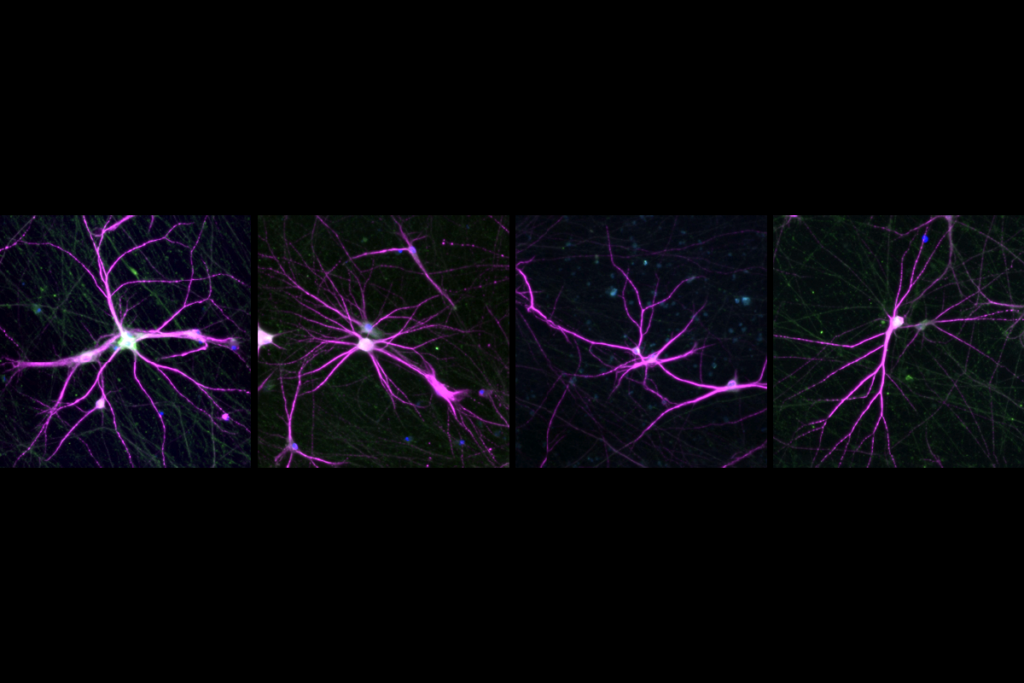
Scientists move closer to gene therapy for Rett syndrome
A virus that delivers a working copy of the Rett syndrome gene to the brain improves features of the condition in mice, and appears to be safe in monkeys.
A virus that delivers a working copy of the Rett syndrome gene to the brain improves features of the condition in mice, and appears to be safe in monkeys, researchers reported today. The findings mark an important step toward testing the treatment in people with the condition.
“We’re hoping this could be something that could go to the clinic,” says Samantha Powers, a graduate student in Brian Kaspar’s lab at Ohio State University in Columbus. Powers presented the unpublished findings at the 2017 Society for Neuroscience annual meeting in Washington, D.C.
About 90 percent of people with the syndrome have mutations in the MECP2 gene. Mice missing a copy of this gene show many of the same features as people with Rett syndrome: They have autism-like stereotyped behaviors, movement difficulties and problems with learning and memory. They also tend to die young.
In 2007, researchers used genetic tools to reinstate MECP2 levels in juvenile and adult Rett mice, and found that this manipulation reverses many of the animals’ Rett-like features1. This finding suggested that gene therapy — using a harmless virus to ferry functioning replacements for the faulty gene — may be a viable treatment for Rett syndrome.
Goldilocks zone:
However, there is a big catch to gene therapy: Delivering too much MECP2 would be harmful. It can cause a condition called MECP2 duplication syndrome, which is characterized by many of the same features as Rett syndrome.
“There is a Goldilocks zone of MECP2 expression,” Powers says.
To find a dose that is just right, Powers and her colleagues injected the brains of newborn Rett mice with varying amounts of a virus containing a healthy copy of the human gene. The virus has been tested in clinical trials of gene therapies for other conditions.
Powers and her colleagues found that the more virus they injected, the more MECP2 levels increased throughout the mouse brain; one dose in particular seemed to restore MECP2 expression to roughly the same level found in control mice.
The researchers then rated the severity of behavioral features in the mice. All of the treated mice deteriorate more slowly with age than the untreated mice do. This effect depends on the dose: Those receiving the highest doses are more protected than those receiving the lowest ones.
The treatment also spares the mutant mice an early death at around 65 days of age. Mice treated with the lowest dose survive an additional 20 days, whereas those receiving the highest dose tested live to be nearly 250 days old.
Powers and her colleagues have begun exploring the safety of the treatment in cynomolgus monkeys, or crab-eating macaques. They injected the virus into the spinal fluid of two control monkeys at 1 year old. The treatment more than doubles the expression of MECP2 throughout most parts of the brain and spinal cord, they found.
The researchers then injected the virus into three more control monkeys and monitored the animals for 18 months. They did not find any effects of the treatment on behavior, body weight, blood parameters or liver enzymes, suggesting that it has few harmful side effects.
For more reports from the 2017 Society for Neuroscience annual meeting, please click here.
References:
- Guy J. et al. Science 315, 1143-1147 (2007) PubMed
Recommended reading

Amina Abubakar translates autism research and care for Kenya

Post-traumatic stress disorder, obesity and autism; and more

Cortical structures in infants linked to future language skills; and more
Explore more from The Transmitter

Null and Noteworthy: Learning theory validated 20 years later

Neuroscientist Gerry Fischbach, in his own words
